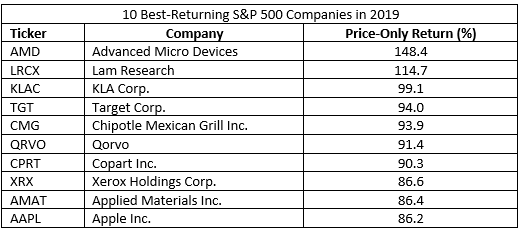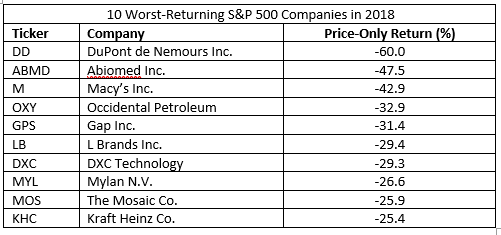Every year, the markets provide us with lessons on prudent investment strategies. Many times, markets offer investors remedial courses, covering lessons it had taught in previous years. That’s why one of my favorite sayings is that there’s nothing new in investing, only investment history you don’t yet know.
Q4 2019 hedge fund letters, conferences and more
The year 2019 supplied a dozen important lessons. As you may note, many of them are repeats from prior years. Unfortunately, too many investors fail to learn them – they keep making the same errors. We’ll begin with my personal favorite, one that the market, if measured properly, teaches each and every year.
Lesson 1: Active management is a loser’s game
Despite an overwhelming amount of academic research demonstrating that passive investing is far more likely to allow you to achieve your most important financial goals, the majority of individual investor assets are still held in active funds.
Last year was another in which the large majority of active funds underperformed despite the fact that the industry claims that active managers outperform in bear markets. Vanguard S&P 500 ETF (VOO) outperformed 77% of active funds in their category, returning 31.4%. Yet, 2019 provided a great opportunity for active managers to generate alpha through the large dispersion in returns between 2019’s best-performing and worst-performing stocks. For example, in terms of price-only returns, 10 stocks within the S&P 500 Index were up at least 82.6%, with two more than doubling in value. Using data from S&P Dow Jones Indices, the following table shows the 10 best returners.
To outperform, all an active manager had to do was overweight those big winners, which outperformed the index by at least 50%. On the other hand, 10 stocks lost at least 25.4%, with the worst performer losing 60% on a price-only basis.
To outperform, all an active manager had to do was underweight, let alone avoid, these dogs, each of which underperformed VOO by at least 56%.
This wide dispersion of returns is typical. Yet, despite the opportunity, year after year, in aggregate, active managers persistently fail to outperform.
The results make it clear that active management is a strategy that can be said to be “fraught with opportunity.” Year after year, active managers come up with excuses to explain why they failed and then argue that next year will be different. Of course, it never is.
Lesson 2: Diversification is always working; sometimes you like the results and sometimes you don’t
Everyone is familiar with the benefits of diversification. It’s been called the only free lunch in investing because, done properly, diversification reduces risk without reducing expected returns. However, once you diversify beyond a popular index such as the S&P 500, you must accept the fact that, almost certainly, you will be faced with periods, even long ones, when a popular benchmark index, reported by the media on a daily basis, outperforms your portfolio. The noise of the media will then test your ability to adhere to your strategy.
Of course, no one ever complains when their diversified portfolio experiences positive tracking variance (i.e., it outperforms the popular benchmark). The only time you hear complaints is when it experiences negative tracking variance (i.e., it underperforms the benchmark). As the table below demonstrates, 2019 was just such a year. To show the returns of various equity asset classes, I used the asset class funds of Dimensional. ((Full disclosure: My firm, Buckingham Strategic Wealth, recommends Dimensional funds in constructing client portfolios.)
Read the full article here by Larry Swedroe, Advisor Perspectives



